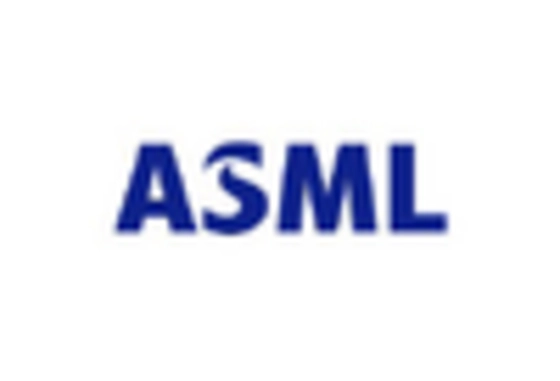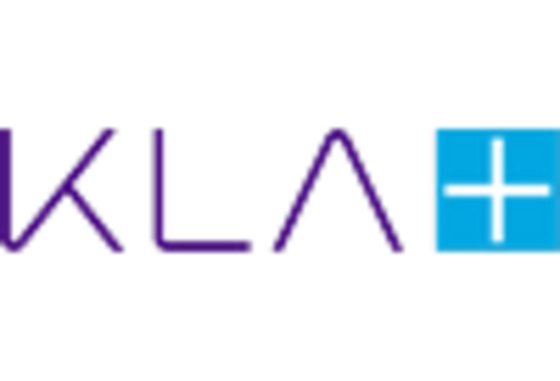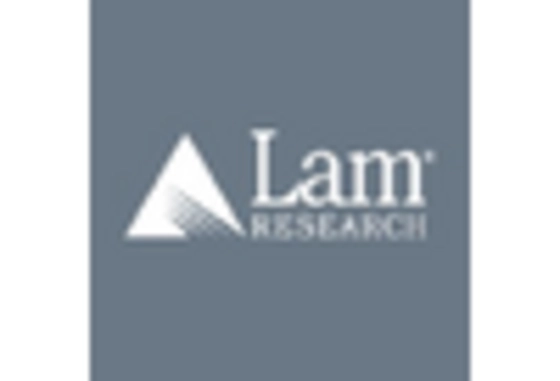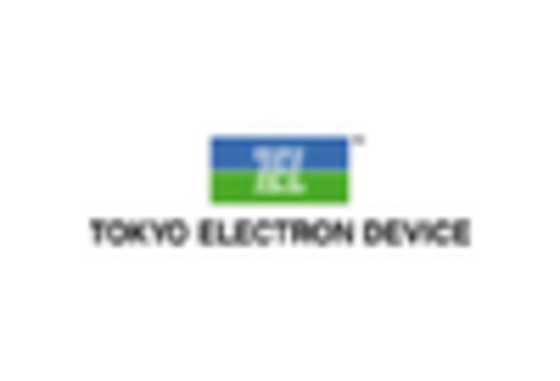5G Network Rollout
The ongoing rollout of 5G networks is a pivotal driver for the Semiconductor Equipment Market. As telecommunications companies invest heavily in infrastructure to support 5G technology, the demand for semiconductors that enable faster data transmission and improved connectivity is escalating. By 2025, the 5G market is expected to reach a valuation of over 700 billion USD, creating a substantial opportunity for semiconductor manufacturers. This surge in demand compels the Semiconductor Equipment Market to adapt and innovate, as companies seek to develop advanced equipment capable of producing the high-performance chips required for 5G applications. The implications for growth in this sector are profound, as the transition to 5G technology reshapes communication and connectivity.
Artificial Intelligence Integration
The integration of artificial intelligence (AI) across various sectors is emerging as a significant driver for the Semiconductor Equipment Market. As industries increasingly adopt AI technologies, the demand for specialized semiconductors that can handle complex computations and data processing is on the rise. In 2025, the AI semiconductor market is projected to exceed 50 billion USD, indicating a robust growth trajectory. This trend necessitates the development of advanced semiconductor manufacturing equipment capable of producing chips optimized for AI applications. Consequently, the Semiconductor Equipment Market is likely to experience heightened activity as companies strive to meet the growing demand for AI-enabled devices and systems, fostering innovation and technological advancement.
Expansion of Automotive Electronics
The Semiconductor Equipment Market is significantly influenced by the expansion of automotive electronics, particularly with the rise of electric vehicles (EVs) and advanced driver-assistance systems (ADAS). In 2025, the automotive sector is anticipated to represent a growing share of semiconductor demand, with projections indicating a market value of approximately 100 billion USD. This shift necessitates the adoption of sophisticated semiconductor manufacturing equipment to produce high-quality chips that support complex functionalities in vehicles. As automotive manufacturers increasingly integrate electronics into their designs, the Semiconductor Equipment Market is poised for substantial growth, driven by the need for innovative solutions that enhance vehicle performance and safety.
Rising Demand for Consumer Electronics
The Semiconductor Equipment Market is experiencing a surge in demand driven by the increasing consumption of consumer electronics. As more households adopt smart devices, the need for advanced semiconductor components escalates. In 2025, the consumer electronics sector is projected to account for a substantial portion of semiconductor sales, with estimates suggesting a market value exceeding 500 billion USD. This trend compels manufacturers to invest in cutting-edge semiconductor equipment to enhance production capabilities and meet consumer expectations. Consequently, the Semiconductor Equipment Market is likely to witness robust growth as companies strive to innovate and produce high-performance chips that cater to the evolving needs of consumers.
Increased Investment in Research and Development
The Semiconductor Equipment Market is benefiting from increased investment in research and development (R&D) by semiconductor manufacturers. As competition intensifies, companies are allocating substantial resources to innovate and enhance their product offerings. In 2025, R&D spending in the semiconductor sector is projected to surpass 80 billion USD, reflecting a commitment to advancing technology and improving manufacturing processes. This influx of investment is likely to drive the development of next-generation semiconductor equipment, enabling manufacturers to produce more efficient and powerful chips. As a result, the Semiconductor Equipment Market is expected to thrive, as companies leverage R&D to gain a competitive edge and respond to the evolving demands of the market.















Leave a Comment